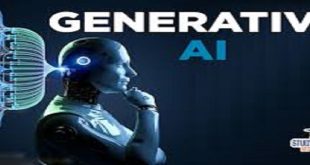Over the past couple of years, artificial talent has grown into a game-changing generation that is rewriting industries, reshaping economies, and redefining ways of interaction with the sector. One of the most profound influences of AI has fallen on clinical research and discovery,
whereby AI-enabled discoveries push the envelope of what was once considered achievable. From unlocking the secrets of the universe to expediting medical breakthroughs, AI is transforming the medical landscape.
The role of AI in modern technology
artificial intelligence, in particular through machine learning (ML) and deep learning (DL) algorithms, has become a valuable tool for scientists, researchers, and innovators. At its core, AI has the capability to process enormous volumes of data, identify patterns, forecast future behavior, and even develop theories on its own.
These competencies are useful within domains where large datasets exist but human analysis is either too slow or too prone to mistake. By complementing human ingenuity with AI, researchers can uncover insights at remarkable velocities and accuracies and thus enable findings that were previously impossible.
Of all the tantalizing attributes of AI, though, it’s how it can parse unstructured records-things that don’t fit neatly into databases or spreadsheets. From genomics to climatology to astronomy, scientists are often forced to sift through enormous volumes of unstructured data-reams of images and genetic sequences, meteorological models.
With the use of AI-powered tools, this information is analyzed with dizzying accuracy to help scientists find anomalies or trends that would have otherwise passed them by.
AI in the Life Sciences: Revolutionizing Medicine and Healthcare
Perhaps one of the most exciting uses of AI is in life sciences, specifically drug discovery and health care. AI is discovering new drugs, making medical treatment more personalized, and diagnostic precision better. During the last couple of years, several pioneering AI-enabled discoveries have taken place in these areas.
One of the most time-consuming and costly aspects of pharmaceutical research is the discovery and development of new tablets. Traditional drug discovery methods have often involved years of laboratory studies, trials, and testing with a high rate of failure.
AI is transforming this landscape by significantly accelerating the process while increasing the chances of success.
For example, AI algorithms predict the interaction of novel molecules with specific biological targets. AI sifts through massive libraries of molecular data to identify promising candidates for entirely new drugs much faster than would be possible with traditional approaches. One impressive recent example is the discovery of a novel antibiotic by scientists at MIT using AI.
This AI-powered version used to be trained on researching chemical substances and used to be able to find a compound with strong antibiotic properties from a database of molecules. The resulting output used to be a likely new treatment for drug-resistant infections, which is a subject of growing concern in worldwide health.
customized treatment
AI is also changing the face of personalized medicine. Most medical models adopt a single-size approach to treatment, but due to genetic variations, environmental influences, and lifestyle changes, each individual reacts differently to the same medication and treatment.
AI-driven models can analyze patient data, including genetic information and medical history, to create more personalized and effective treatment plans.
A well-known example is IBM’s Watson for Oncology, which is designed as an AI to help doctors diagnose cancer and recommend personalized treatment options based only on the latest research and patient data.
AI tools like Watson, with their ingestion of huge volumes of clinical literature and medical trial data, thereby assist practitioners in making better-informed decisions and personalizing treatments for specific patients.
Scientific Imaging and Diagnostics Medical imaging is another domain in which AI is making huge leaps. Conventionally, radiologists and pathologists spend millions of hours peering at medical images to discover illnesses ranging from cancer to heart disease to neurological disorders. It is possible, however, to train AI algorithms to analyze such images with remarkable speed and precision.
Deep learning styles evolved to recognize early signs of lung most cancers in CT scans and outperformed human radiologists in some instances. AI-driven diagnostic tools are also being used to spot diabetic retinopathy in retinal snapshots,
the leading cause of blindness across the world. Those structures not only beautify diagnostic accuracy but also make it viable to display more sufferers in less time, leading to earlier interventions and better fitness effects.
AI-driven Discoveries in Physics and Astronomy
The effect of AI is not constrained to the life sciences. In physics and astronomy, AI is being used to unlock the secrets of the universe-from discovering new celestial bodies to detecting gravitational waves.
Astronomical Discoveries
The volume of records generated by means of modern astronomical units such as the Hubble space Telescope or the square Kilometer Array, SKA, is simply mind-boggling. These instruments take terabytes of data per day, much more than any human would ever want to consider by hand.
AI proved helpful on this frontier because, through this, the gigantic data could be treated and analyzed by astronomers so much faster.
In 2018, using the power of AI, investigators from Google and the College of Texas detected two new exoplanets. “The team of scientists has trained a neural network capable of sifting through the information of NASA’s Kepler space telescope for diffused patterns in the light curves of distant stars.”
This breakthrough was able to exhibit a true potentiality of AI: making sense of astronomical datasets that allow detecting a new world beyond our Sun machine.
AI is also helping researchers search for signs of alien life. Machine learning models are being run on radio data gathered with the use of observatories in searching out patterns that could indicate the existence of intelligent life.
While no concrete evidence has yet been found, AI is helping to speed up the search by processing large volumes of data that would be impossible for human astronomers to handle.
AI in Environmental Technology: Tackling Climate Change and Sustainability
AI is also being tapped in the search for solutions to some of the most pressing issues that face the planet, such as climate change and environmental sustainability. By analyzing data from satellites, sensors, and weather models, AI provides invaluable insights into the impact of climate change and can point the way to strategies that could lessen its impact.
Climate Modeling and Prediction
One of the most critical challenges facing climate technological know-how is the prediction of Earth’s climate trade in response to human activities. The fashions of climate modeling are quite complex, which involves the simulation of an infinite number of variables comprising atmospheric conditions, ocean currents, and human emissions.
AI is now applied to improve the quality of climate models and to provide specific forecasts of future weather scenarios. For instance, the machine learning algorithms are capable of processing long-term weather information to bring about patterns and forecast future alterations in heat or rain,
which may go up to grievous climates. Such forecasts are important to the governments and policymakers as they work out ways to adapt to and mitigate the impacts of weather exchange.
Sustainable Agriculture
Research is also being done with the use of AI to promote sustainable agriculture methods. Through reading data off satellites, drones, and sensors, AI can also give farmers knowledge about crop health, soil conditions, and weather patterns. Such data would allow farmers to use water, fertilizers, and pesticides more judiciously; hence less waste, and less environmental impact from agriculture.
As such, AI-driven technologies from Blue River era’s “See & Spray” machinery use computer vision to locate weeds in real time and spray herbicides only where necessary. It is this kind of focused application that reduces the amount of chemical substances applied in farming, fostering methods that are more viable and cost-effective to the farmer.
###
But AI is still in its relative infancy, yet the capability to push medical discovery is great. As AI technology keeps evolving, so will our expectations of even more innovative findings from medicinal drugs and biology to physics and environmental technologies.
Indeed, AI has proved an influential tool to open up new knowledge, solve complex problems, and tackle global challenges.
But again, one should not forget that AI is not a substitute for the human brain; rather, it is an assistance and support mechanism. The best results emerge when AI works in tandem with human input, liberating scientists and researchers to creative thinking, speculation generation, and ethical decision-making, even as AI does the heavy lifting on data analysis.
In the future, AI-enabled discoveries will redefine our perception of the world and open up new dimensions of knowledge. From improving human health to preserving the environment and understanding the cosmos, AI is already setting a revolution in the way we learn and innovate, with its impact only continuing to increase.


